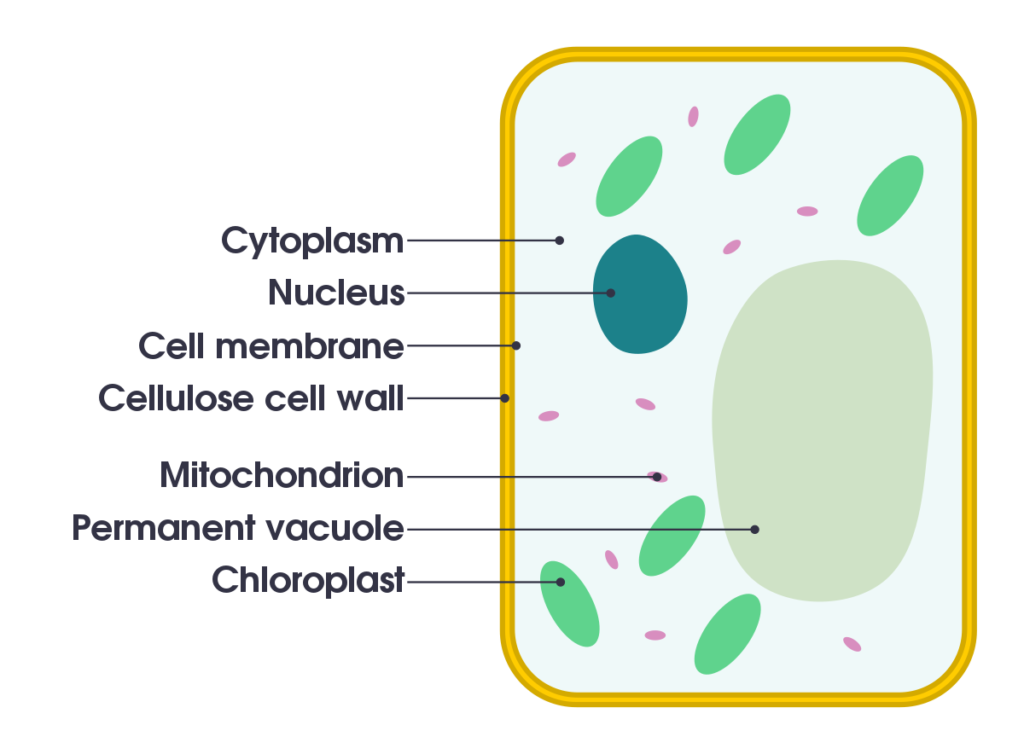Cells are the basic units of life, and they basically make up the basic unit of life. Before we go into what they are and what they are made of, let’s learn about the cell theory. Theodor Schwan and Mattis Schledien are the ones who made the cell theory, and these are
- The cell is the basic unit of life
- All cells come from a pre-existing cell
- All living things are made up of one or more cells
So the cell theory is basically talking about this: All living things are made up of unicellular or multicellular cells (Unicellular – only one cell/Multicellular – made up of two or more cells), and cells come from multicellular cells. This means that because multicellular cells have many cells, they can reproduce by themselves.
There are two types of cells – animal cells and plant cells. First, plant cells. Like the word itself, plant cells are what make up the plants, and why the plant looks green.

This is a simple drawing of the plant cell. Cytoplasm is the goopy substance in the cell that helps keep everything apart. The nucleus, which is the biggest part in the cell (I know it isn’t the biggest, it’s because the vacuole sucked up food), is the brain of the cell. It contains the plant’s DNA. The cell membrane is the plant’s skin. It lets things from outside go inside, and things from inside out. The cell wall is the armor of the cell. It protects the cell from the outside. The mitochondria is the muscle of the cell. It provides energy, and this is the reason why the plant can stay up. The vacuole is the belly of the cell. It stores energy for the cell. Lastly, the chloroplast if the mouth of the cell. It helps the cell’s photosynthesis, and because the chloroplast is green, the plant is green.
To summarize, it is this.
Cytoplasm – bone
Nucleus – brain
cell membrane – skin
cell wall – clothes
mitochondria – muscle (power house)
chloroplast – mouth
I’ll continue on with the animal cell in the next blog.